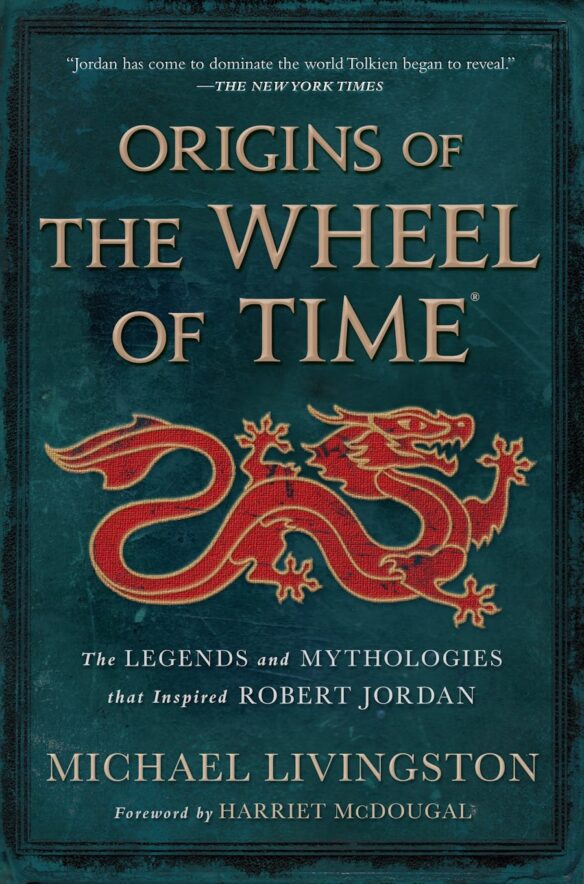
Origins of The Wheel of Time: the Legends and Mythologies by Michael Livingston
Tor Books, ISBN 1250860520 (November 8, 2022)
Review by Warner Holme: Michael Livingston’s Origins of The Wheel of Time: the Legends and Mythologies that inspired Robert Jordan represents an interesting example of an adapted text. Originally a series of presentations given at conventions, for many who prefer a more homely environment or a quieter method of observing the material this will be their first opportunity to experience it.
A detailed if not thorough biography of Robert Jordan is included towards the beginning of the book. This is more in-depth than previously published biographical pieces, including references from his loved ones as well as quotations from his own personal anecdotes. This material ranges from quite early in his life all the way to years after his death when the completion of The Wheel of Time required bringing in Brandon Sanderson to work from his notes. All of these are well documented, a number of textual notes leading to citations later in the book. They are also immensely useful to those wishing to understand the man’s personal background or the background of the final three books in this series.
A distinct section of this book is devoted to the influence that The Lord of The Rings and J.R.R. Tolkien’s work in general had on Robert Jordan for The Wheel of Time. This is a wise decision as while it was a major work and influence, separating it out allows the material which provided influence in other ways to be guaranteed a suitable amount of time. Indeed some of the most fascinating material in this first section comes from quotations by Robert Jordan about the ways in which he chose to apply what the creator of Middle-earth did either stylistically or philosophically in his own work, and through that the many ways in which he would also choose to contrast the material.
Another large portion of the book deals with other influences, and it is greatly appreciated. Many obvious influences came from the Arthurian stories like Le Morte de Arthur, with a nice comparison of names provided in this very book to make that point. Still other influences such as Beowulf, one of the oldest surviving stories from the anglosphere if not the oldest, are discussed in detail.
A large section is the book is taken up by an alphabetical cataloging of obvious influences of the real world upon the Wheel of Time book series. While this is all very interesting information the formatting as well as the nature of the information lends it to suiting better as a reference rather than strict continued reading material.
Towards the end of the book, Livingston comments that he sees this volume more as a beginning to examining the work of Robert Jordan and this world in particular. While it is definitely hopeful that more thorough and deep dives into this world will exist, this volume does make a very nice starting point. Details ranging from Robert Jordan’s time in the Vietnam War all the way to hood ornaments are brought up in connection to the man’s stylistic choices throughout this text, however few of them are fully interrogated. This book is well recommended to fans of Robert Jordan who are curious about the ways his work was influenced and shaped both during his life and after his death.
(Tor, 2022)
Discover more from File 770
Subscribe to get the latest posts sent to your email.
